DAVIcal
DAViCal is a server for calendar sharing. It is an implementation of the CalDAV protocol designed for storing calendar resources (in iCalendar format) on a remotely shared server.
An increasing number of clients support maintaining shared calendars remotely via CalDAV, including Mozilla Calendar (Sunbird / Lightning), Evolution, Mulberry, Chandler, and various other closed-source products such as Apple's iCal and iOS.
Installation
For installation, we will use the package provided by the Debian distribution:
apt install davical


After installation, it is necessary to grant users davical_app and davical_dba access to connect to the davical database without a password:
nano /etc/postgresql/9.6/main/pg_hba.conf

# PostgreSQL Client Authentication Configuration File
# ===================================================
#
# Refer to the "Client Authentication" section in the PostgreSQL
# documentation for a complete description of this file. A short
# synopsis follows.
#
# This file controls: which hosts are allowed to connect, how clients
# are authenticated, which PostgreSQL user names they can use, which
# databases they can access. Records take one of these forms:
#
# local DATABASE USER METHOD [OPTIONS]
# host DATABASE USER ADDRESS METHOD [OPTIONS]
# hostssl DATABASE USER ADDRESS METHOD [OPTIONS]
# hostnossl DATABASE USER ADDRESS METHOD [OPTIONS]
#
# (The uppercase items must be replaced by actual values.)
#
# The first field is the connection type: "local" is a Unix-domain
# socket, "host" is either a plain or SSL-encrypted TCP/IP socket,
# "hostssl" is an SSL-encrypted TCP/IP socket, and "hostnossl" is a
# plain TCP/IP socket.
#
# DATABASE can be "all", "sameuser", "samerole", "replication", a
# database name, or a comma-separated list thereof. The "all"
# keyword does not match "replication". Access to replication
# must be enabled in a separate record (see example below).
#
# USER can be "all", a user name, a group name prefixed with "+", or a
# comma-separated list thereof. In both the DATABASE and USER fields
# you can also write a file name prefixed with "@" to include names
# from a separate file.
#
# ADDRESS specifies the set of hosts the record matches. It can be a
# host name, or it is made up of an IP address and a CIDR mask that is
# an integer (between 0 and 32 (IPv4) or 128 (IPv6) inclusive) that
# specifies the number of significant bits in the mask. A host name
# that starts with a dot (.) matches a suffix of the actual host name.
# Alternatively, you can write an IP address and netmask in separate
# columns to specify the set of hosts. Instead of a CIDR-address, you
# can write "samehost" to match any of the server's own IP addresses,
# or "samenet" to match any address in any subnet that the server is
# directly connected to.
#
#
# DATABASE and USER names containing spaces, commas, quotes and other
# special characters must be quoted. Quoting one of the keywords
# "all", "sameuser", "samerole" or "replication" makes the name lose
# its special character, and just match a DATABASE or USER name with
# that name.
#
# This file is read on server startup and when the postmaster receives
# a SIGHUP signal. If you edit the file on a running system, you have
# to SIGHUP the postmaster for the changes to take effect. You can
# use "pg_ctl reload" to do that.
# Put your actual configuration here
# ----------------------------------
#
# If you want to allow non-local connections, you need to add more
# "host" records. In that case you will also need to make PostgreSQL
# listen on a non-local interface via the listen_addresses
# configuration parameter, or via the -i or -h command line switches.
# DO NOT DISABLE!
# If you change this first entry you will need to make sure that the
# database superuser can access the database using some other method.
# Noninteractive access to all databases is required during automatic
# maintenance (custom daily cronjobs, replication, and similar tasks).
#
# Database administrative login by Unix domain socket
local all postgres md5
# TYPE DATABASE USER ADDRESS METHOD
# We allow users davical_app and davical_dba to connect without a password to the davical database
local davical davical_app trust
local davical davical_dba trust
# "local" is for Unix domain socket connections only
local all all peer
# IPv4 local connections:
host all all 127.0.0.1/32 md5
# IPv6 local connections:
host all all ::1/128 md5
# Allow replication connections from localhost, by a user with the
# replication privilege.
#local replication postgres peer
#host replication postgres 127.0.0.1/32 md5
#host replication postgres ::1/128 md5
After editing the pg_hba.conf file, we restart the PostgreSQL service:
systemctl restart postgresql

Before proceeding, we ensure that we have some PHP modules installed:
apt install php-imap php-curl php-cgi php-xml

Next, we run the script that will create the database structure on the PostgreSQL server:
su - postgres -c /usr/share/davical/dba/create-database.sh

After running the script, if all conditions are met, we will see a screen similar to the one below. We will carefully note the admin user and the corresponding password:

We activate the service page DAVIcal:
a2ensite davical

thus we will be able to connect with the user admin and the password from the previous step to the service management page:
http://ip.ip.ip.ip/davical

after logging in, we will be able to create users who will be able to use the calendar and contacts service.
For usage, I use the CardBook and Lightning clients, which are extensions of the email client Thunderbird:
To install CardBook, follow the steps below:


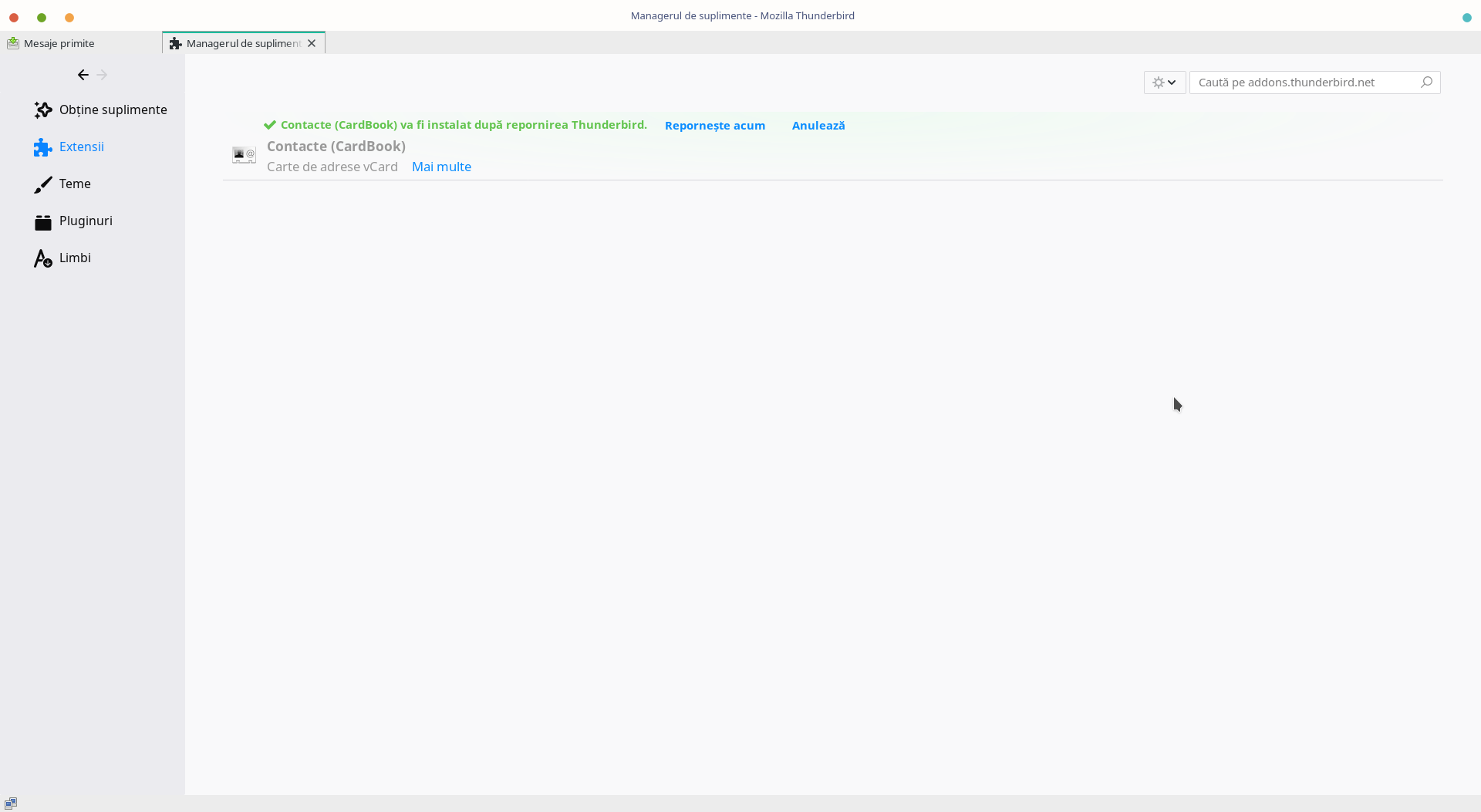
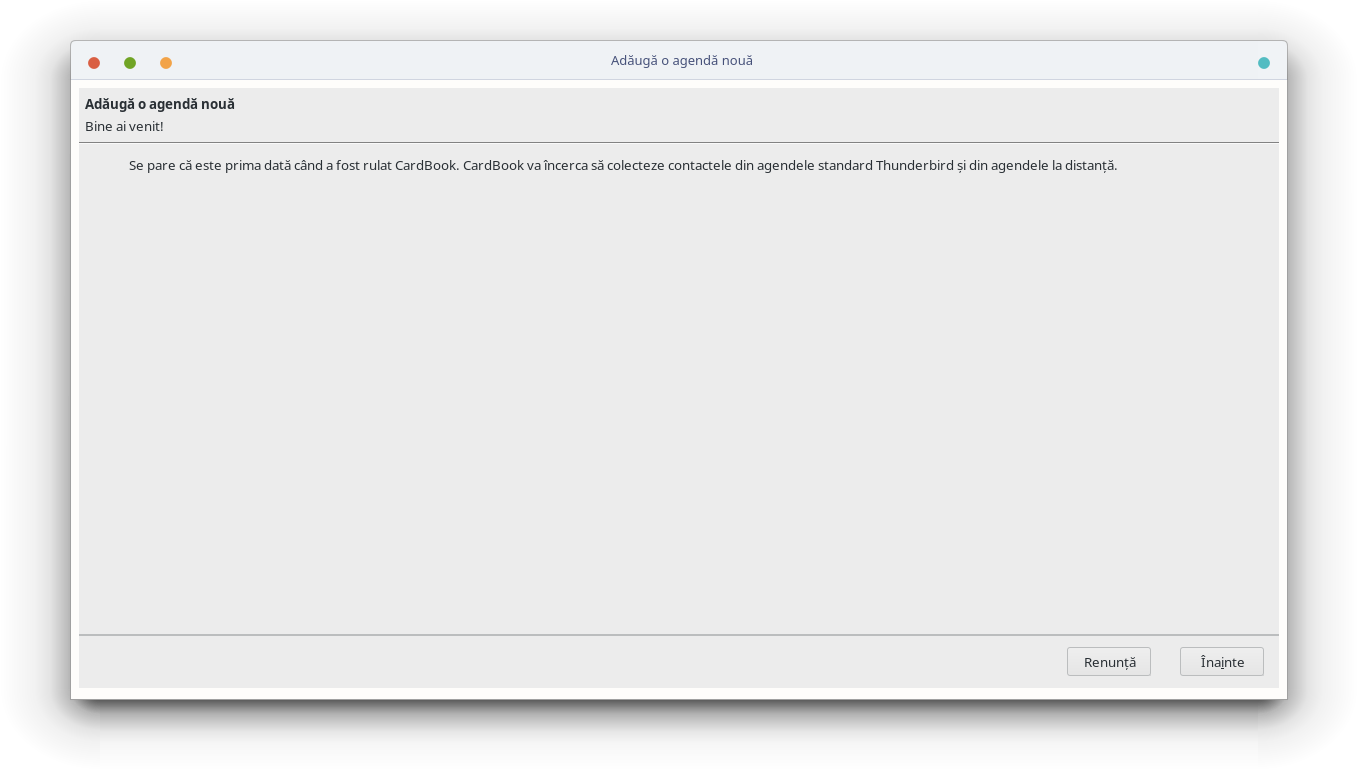




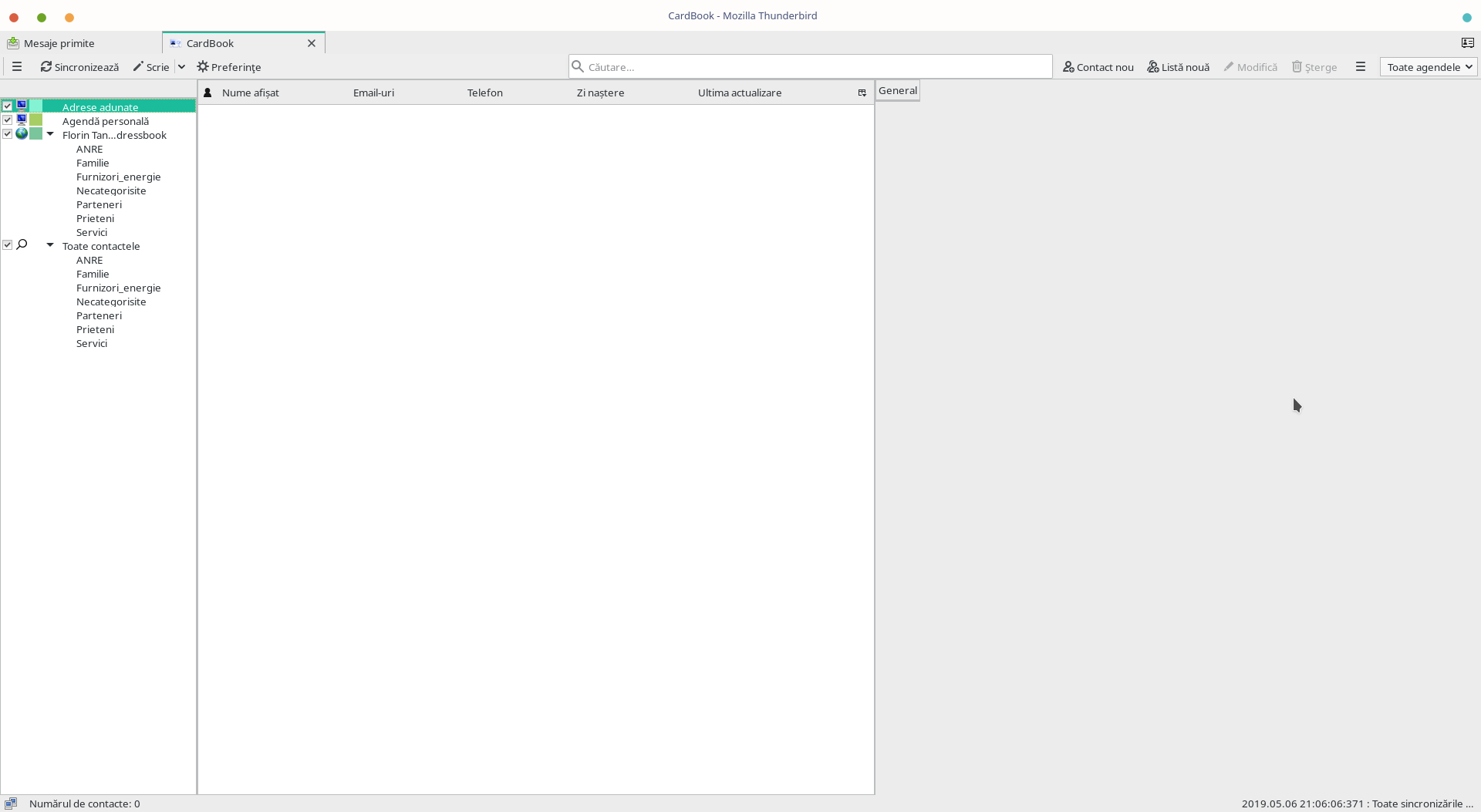
For Lightning, the following steps will be followed:

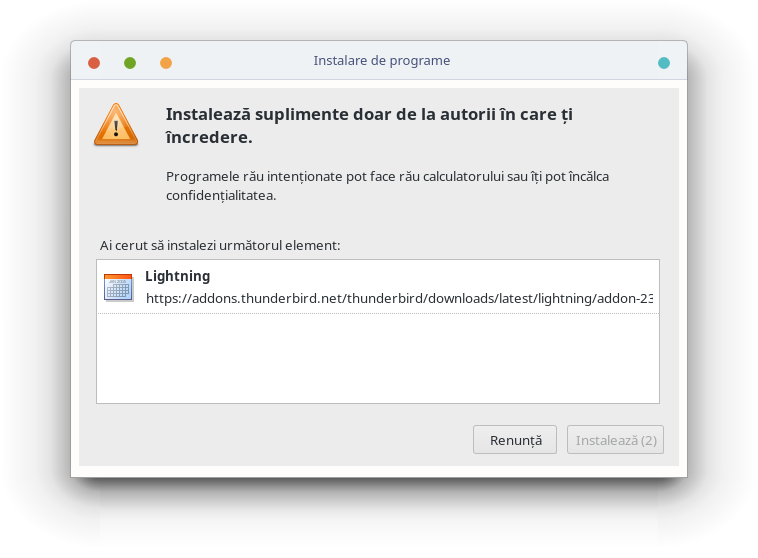
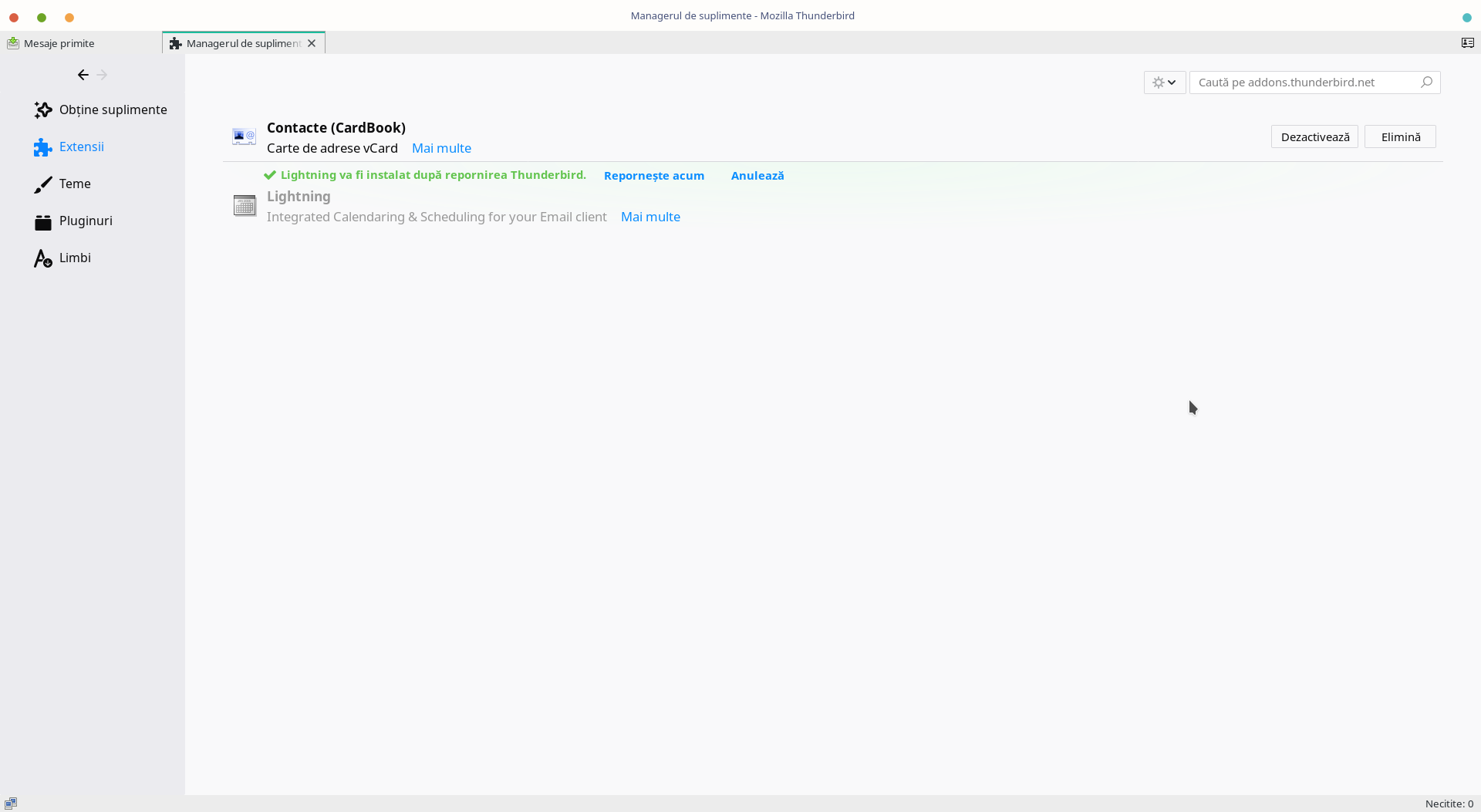

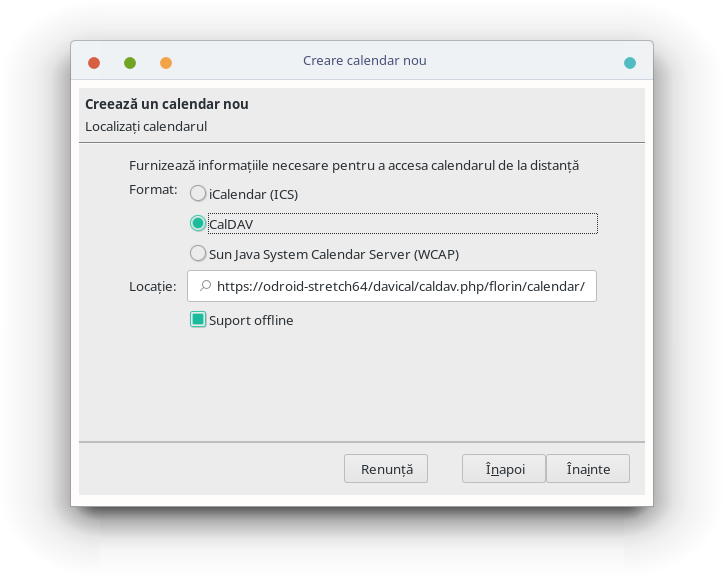


The first reminder that was recorded on the server has appeared:
